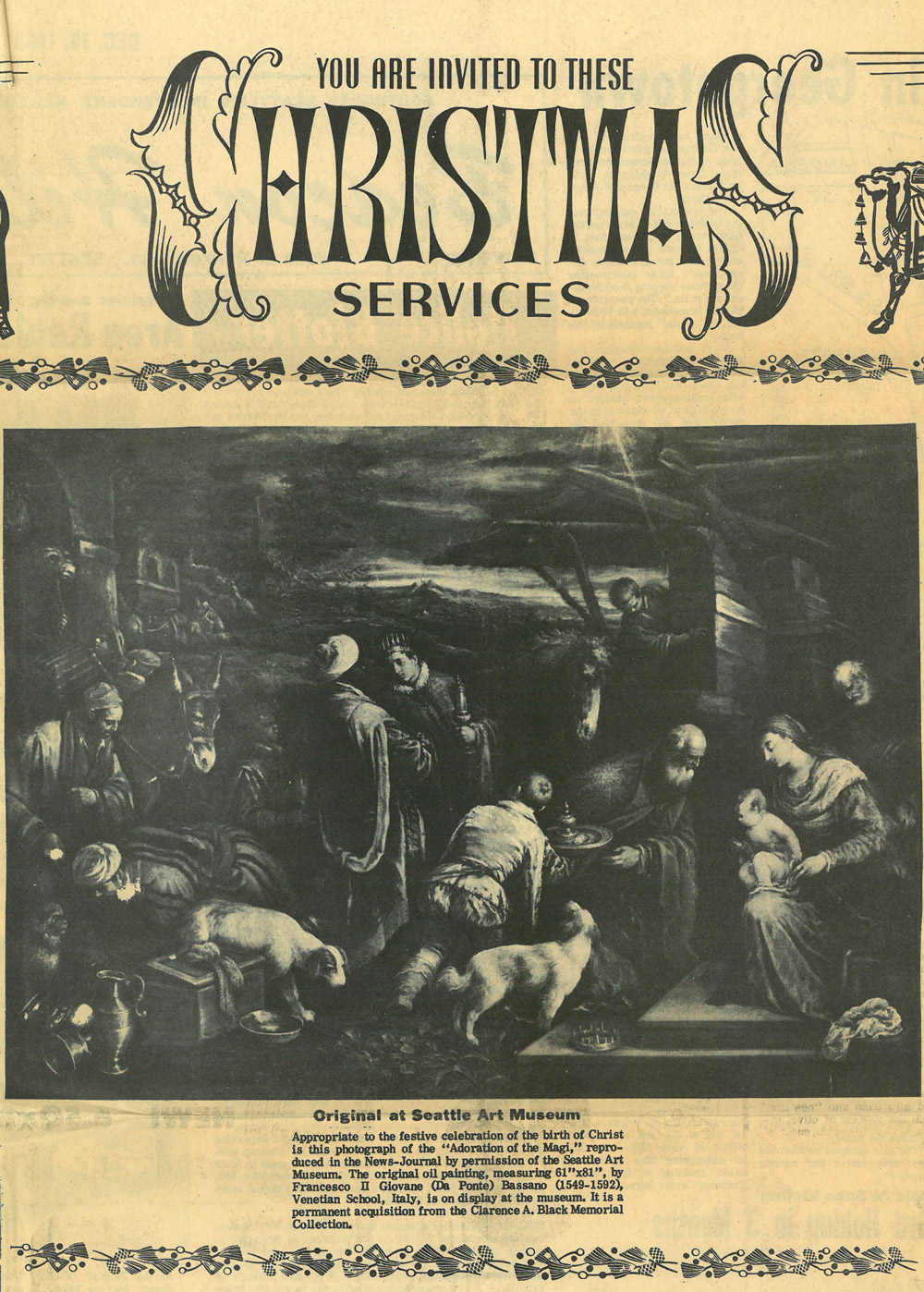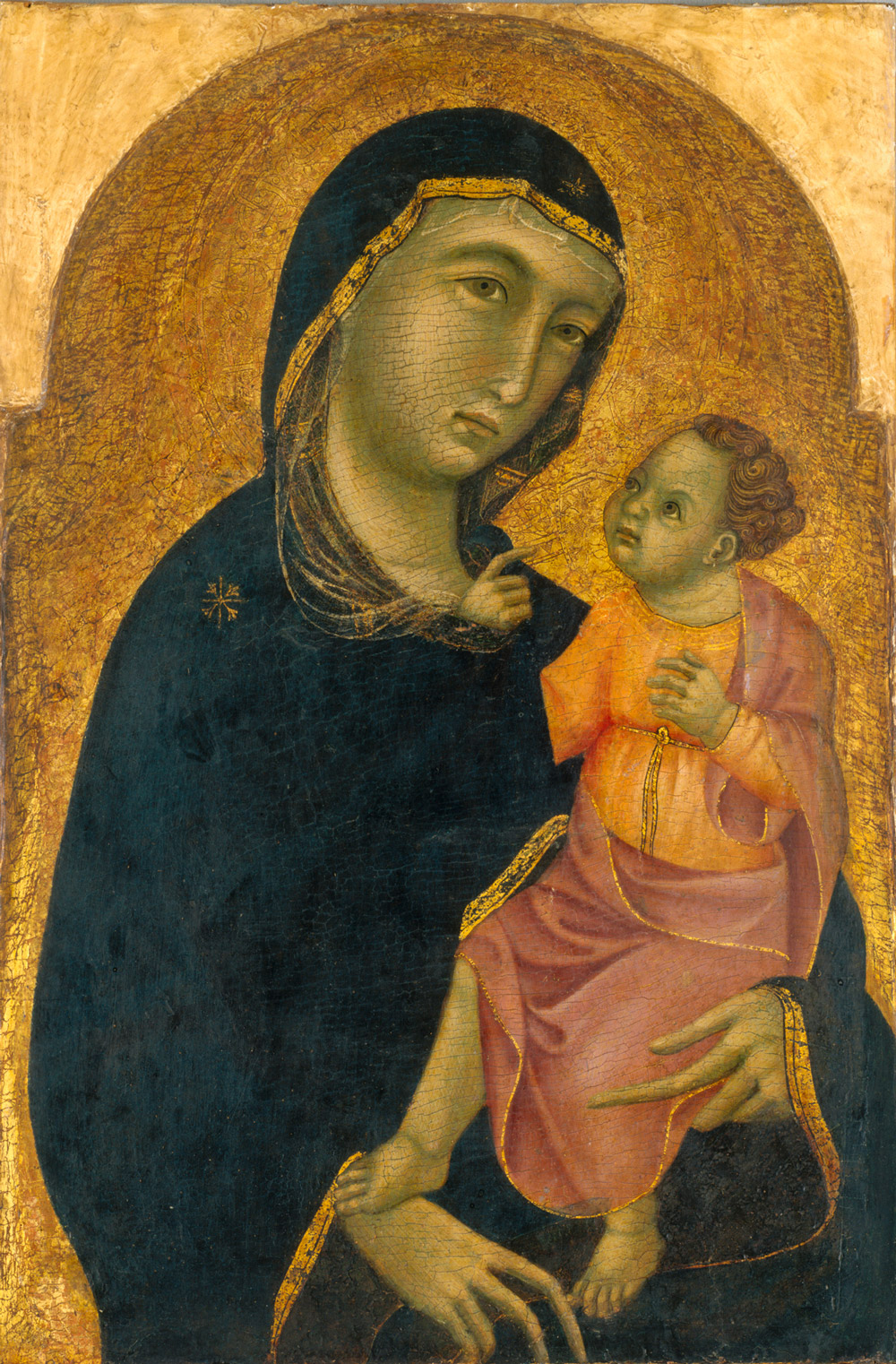Object of the Week: Virgin and Child
Wandering through our European art galleries at SAM one day, I overheard a visitor lamenting the space we had given to older art with Christian themes. His voice dripping with disdain, he said, “Oh, pictures of Mary and Jesus. I’d rather look at myself in the mirror!” Besides drawing laughter from his companion and from myself, his comment got me noodling and then writing this blog post.
Allow me to make a case for Mary-and-Jesus pictures this timely week.
A lot has changed since the holiday season of 1967, when SAM sent out a Christmas card with a reproduction of its great Francesco Bassano Adoration of the Magi painting, and since December 19, 1968, when the Beacon Hill News-Journal sported a similar reproduction of the Bassano, while inviting Seattleites to a long list of local Christmas services.
American museums today take the responsibility to honor the diversity of the human race , the American population, and the specific communities they serve very seriously by representing a range of viewpoints in the galleries. Religious as well as ethnic diversity and identity freedom are all at the forefront of these conversations. Diversity and inclusion are necessarily central to museum hiring practices, too. These core concepts represent steps forward to a more equitable global community. I believe SAM is rightly approaching diversity and inclusion with its focus and humility, understanding that it has areas in which to grow, aiming to address those head-on, and setting its sights on better serving our delightfully diverse city and world.

A painting like SAM’s Virgin and Child by the Master of San Torpè of Siena, dated to the end of the 13th century or early 14th century, does achieve a number of important goals for the museum. Simple in composition and small in scale, Virgin and Child has a very intimate presence. Whatever the artist’s ambition in creating the work—maybe a genuine sense of devotion to God or a devotion to being exceptionally good at his craft—he produced a picture of quality that has handsomely withstood 700 years.
Remarkable as a work of art, the painting shows a high level of craftsmanship and gives us a window onto a significant period in art history. Works produced in this Proto-Renaissance style of the 13th and 14th centuries directly precipitated, well, the Renaissance, with its focus on humanist ideas and a visual art that encouraged scientific perspective and a mimetic approach to representing the world. The religious subject, the Madonna and Child, is very representative of the time and place when it was painted, one of the most important themes for the period. I find the aesthetic really intriguing: the balance of heavenly gold and august blue gives the painting an appropriately impressive air, and the figures have oddly proportioned features like those crazy fingers.
Many of our visitors won’t experience a connection to the roles Mary and Jesus play in Christian theology, but quite a few more—I daresay all of our visitors—were born to mothers. The maternal affection Mary shows for her baby as she cradles him, the kind of loving, protective care that she embodies—these are essentially human feelings. To illustrate the longings of the human soul in visual art is, for me, one of the great challenges for an art museum, and one that this historical piece takes up well.
Very warm wishes to all this holiday season!
P.S. To those who celebrate Christmas, I hope it’s a very merry one!
—Jeffrey Carlson, SAM Collections Coordinator

